The excerpt below is from "Permutation, Parametric and Bootstrap Tests of Hypotheses", Third Ed. by Phillip Good (pages 58-61), section 3.7.2..
I am trying to implement this permutation test in R (see further below) to compare two variances. I am thinking now about how to calculate the p-value, and whether the test allows for different alternative hypothesis (greater, less, two-sided) and I am not sure on how to proceed.
Could you shed some light on this and perhaps give me some criticism about the code? Many thanks!
# Aly's non-parametric, permutation test of equality of variances
# From "Permutation, Parametric and Bootstrap Tests of Hypotheses", Third Ed.
# by Phillip Good (pages 58-61), section 3.7.2.
# Implementation of delta statistic as defined by formula in page 60
# x_{i}, order statistics
# z = x_{i+1} - x_{i}, differences between successive order statistics
aly_delta_statistic <- function(z) {
z_length <- length(z)
m <- z_length + 1
i <- 1:z_length
sum(i*(m-i)*z)
}
aly_test_statistic <- function(sample1, sample2 = NULL, nperm = 1) {
# compute statistic based on one sample only: sample1
if(is.null(sample2)) {
sample1 <- sort(sample1)
z <- diff(sample1)
return(aly_delta_statistic(z))
}
# statistic based on randomization of the two samples
else {
m1 <- length(sample1)
m2 <- length(sample2)
# allocate a vector to save the statistic delta
statistic <- vector(mode = "numeric", length = nperm)
for(j in 1:nperm) {
# 1st stage resampling (performed only if samples sizes are different)
# larger sample is resized to the size of the smaller
if(m2 > m1) {
sample2 <- sort(sample(sample2, m1))
m <- m1
} else {
sample1 <- sort(sample(sample1, m2))
m <- m2
}
# z-values: z1 in column 1 and z2 in column 2.
z_two_samples <- matrix(c(diff(sample1), diff(sample2)), ncol = 2)
# 2nd stage resampling
z <- apply(z_two_samples, 1, sample, 1)
statistic[j] <- aly_delta_statistic(z)
}
return(statistic)
}
}
